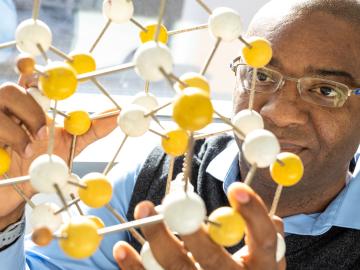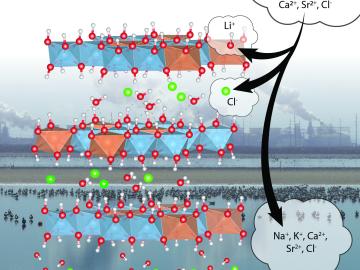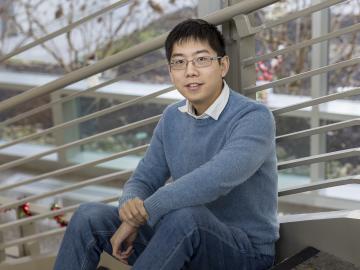
Filter News
Area of Research
News Topics
- 3-D Printing/Advanced Manufacturing (3)
- Advanced Reactors (1)
- Artificial Intelligence (3)
- Big Data (6)
- Bioenergy (1)
- Biomedical (3)
- Computer Science (16)
- Coronavirus (4)
- Cybersecurity (1)
- Energy Storage (2)
- Environment (1)
- Exascale Computing (2)
- Grid (1)
- High-Performance Computing (1)
- Machine Learning (2)
- Materials Science (9)
- Mathematics (1)
- Microscopy (1)
- Nanotechnology (2)
- Neutron Science (5)
- Nuclear Energy (3)
- Physics (4)
- Quantum Science (4)
- Security (1)
- Summit (5)
- Transformational Challenge Reactor (2)
- Transportation (1)
Media Contacts

Valentino (“Tino”) Cooper of the Department of Energy’s Oak Ridge National Laboratory uses theory, modeling and computation to improve fundamental understanding of advanced materials for next-generation energy and information technologies.

We have a data problem. Humanity is now generating more data than it can handle; more sensors, smartphones, and devices of all types are coming online every day and contributing to the ever-growing global dataset.

As the second-leading cause of death in the United States, cancer is a public health crisis that afflicts nearly one in two people during their lifetime.

The formation of lithium dendrites is still a mystery, but materials engineers study the conditions that enable dendrites and how to stop them.

A team from the ORNL has conducted a series of experiments to gain a better understanding of quantum mechanics and pursue advances in quantum networking and quantum computing, which could lead to practical applications in cybersecurity and other areas.

Liam Collins was drawn to study physics to understand “hidden things” and honed his expertise in microscopy so that he could bring them to light.

In the quest for domestic sources of lithium to meet growing demand for battery production, scientists at ORNL are advancing a sorbent that can be used to more efficiently recover the material from brine wastes at geothermal power plants.

Scientists at have experimentally demonstrated a novel cryogenic, or low temperature, memory cell circuit design based on coupled arrays of Josephson junctions, a technology that may be faster and more energy efficient than existing memory devices.

Eugene P. Wigner Fellow Victor Fung’s story is proof that a series of positive experiences around science and happy accidents can lead to a rewarding research career. He joined ORNL in 2019.

Researchers at ORNL have developed a quantum chemistry simulation benchmark to evaluate the performance of quantum devices and guide the development of applications for future quantum computers.


